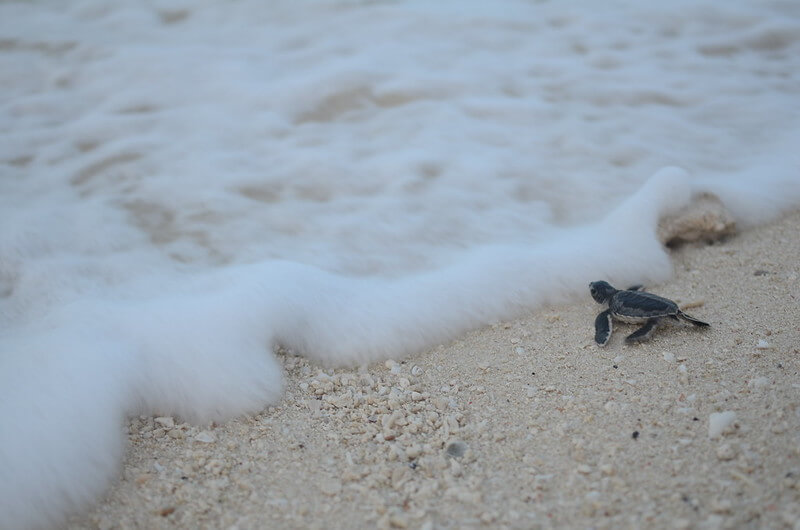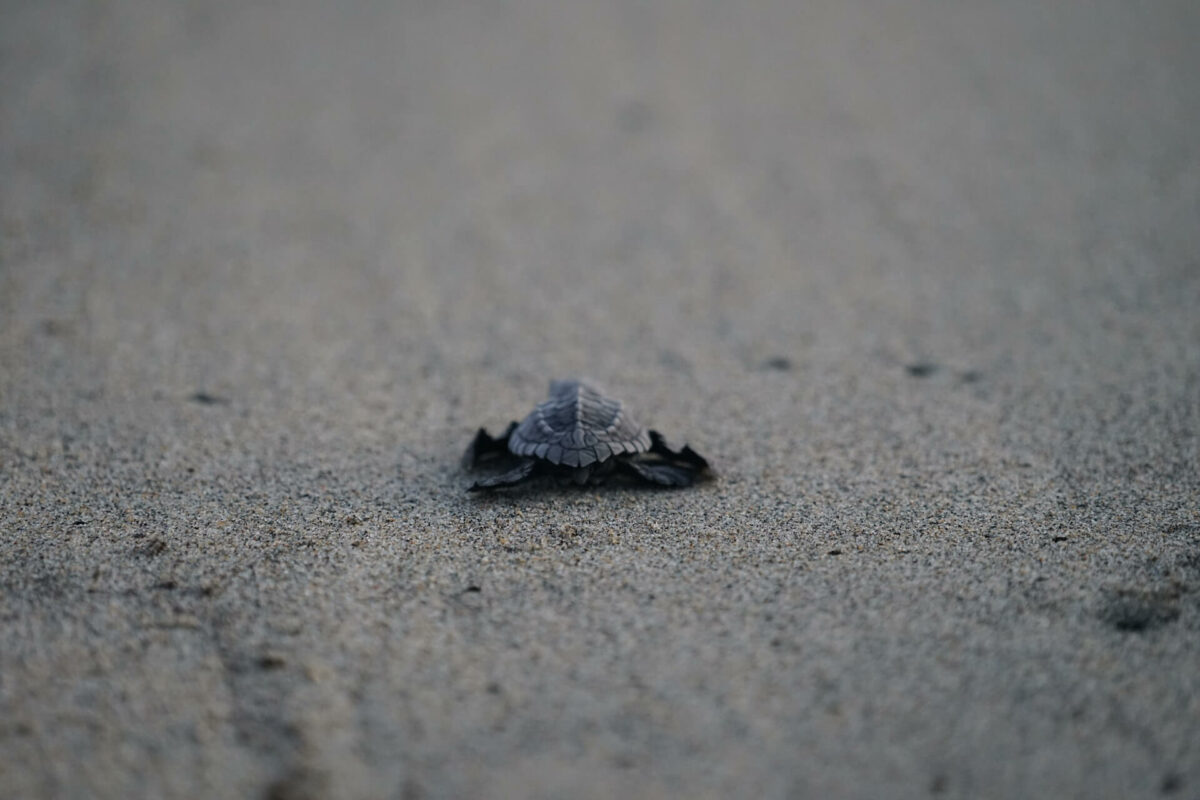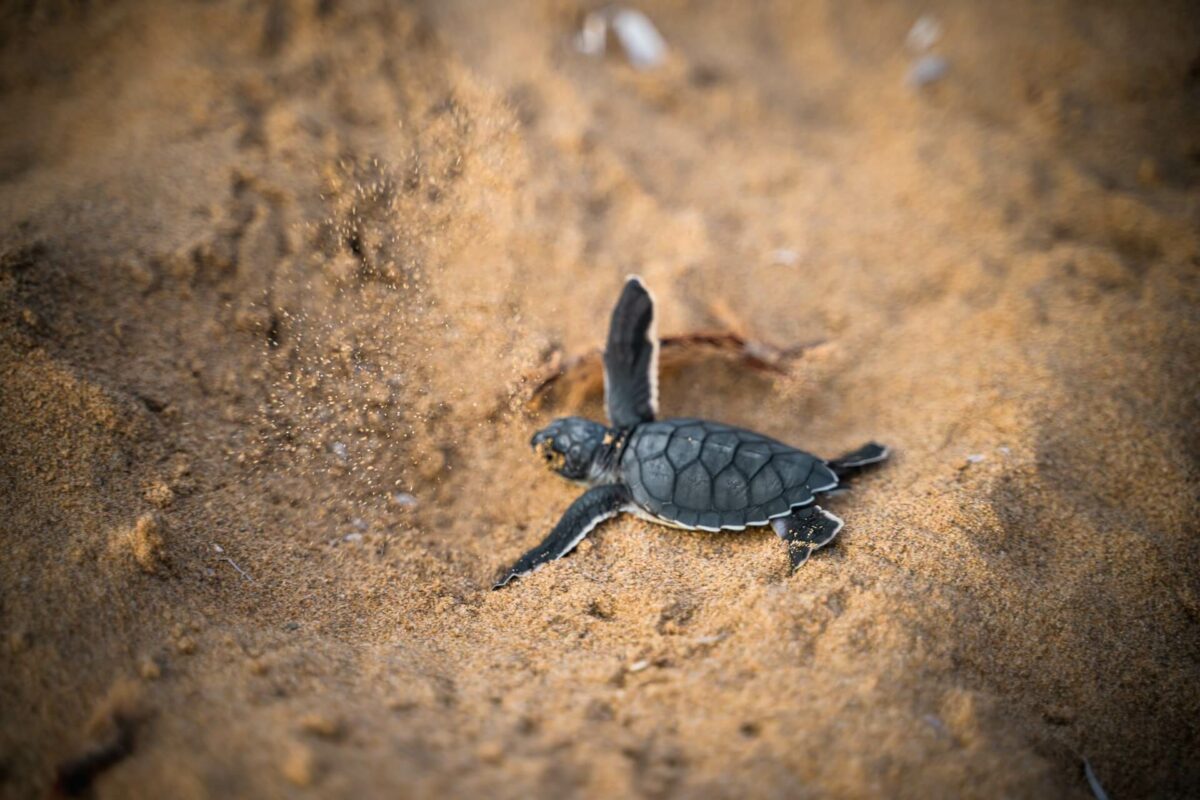Seeing a sea turtle in the wild is quite a magnificent sight and one that’s not experienced by many.
Even on beaches where sea turtles are known to nest, it’s uncommon even for locals to see them as both, mothers and hatchlings, will usually wait until nightfall to make their appearance on the beach.
However rare it’s not impossible to come across one of these charismatic reptiles which brings us to the topic of this article: What to do if you find a baby sea turtle
If the sea turtle seems healthy and it’s on its way to the ocean you must do absolutely nothing no matter how hard it is to remain still while watching the baby turtle try its best to reach the water.
However, there are a few instances when your prompt and adequate intervention is advised.
Read on while I tell you exactly what you should and shouldn’t do if you come across the wonderful sight of a baby sea turtle.
What To Do If You See A Baby Sea Turtle
There are 3 things to look at if you come across a baby sea turtle that will dictate what to do next:
- If the baby sea turtle is on the beach and heading towards the ocean: do nothing but watch from a distance! Don’t get close, don’t place your hands or on near the baby, don’t shine a flashlight at it, and don’t use flash photography.
- The turtle seems confused but healthy: if a baby is heading in the direction opposite to the ocean or if its path to the water is blocked move it to the edge of the water but let it enter the ocean on its own. Don’t hold it for longer than necessary and handle it as little as possible.
- If the baby is in distress, hurt, or looks weak/sick: call fish and wildlife immediately. If you’re in Florida, where 90% of US sea turtles nest, you can call 1-888-404-3922. For the rest of the US, the hotline is 1-800- 344-9453.
A Fish and Wildlife agent will assess the situation and give you detailed instructions on how to proceed.

If you are outside of the US in a coastal area contact local wildlife authorities in advance to request the emergency contact number so that you’re prepared in case you need it.
What Happens If You Pick Up A Baby Turtle?
You should never pick up a baby sea turtle! It is actually a federal crime to touch or harass them so picking it up can easily be considered a violation.
Besides the legal part of it there are also several things that can happen if you pick up a baby sea turtle:
- You can easily hurt it: sea turtle hatchlings have an extremely soft shell that can be crushed if not handled properly. They also have a yolk sac attached to their plastron that provides enough nutrients during the first days after hatching and you could break it.
- You can pass on harmful bacteria to a baby sea turtle and vice versa.
- It will scare the turtle and cause unnecessary stress and confusion.
- The disruption can make it hard for the turtle to imprint on its birth beach: female sea turtles return to the same beach they were born when it’s their turn to lay eggs.
The process of scrambling from the nest site to the ocean is a crucial part of the imprinting process and when you pick up a baby sea turtle you could be preventing this process from taking place.
Should You Put The Baby Sea Turtle Back In The Ocean?
You should NOT put a baby sea turtle back in the ocean!
Remember it’s a federal crime to touch them. Additionally, I just listed everything that could go wrong if you decide to touch a baby turtle.
It is extremely important that the baby performs its trek from the nesting site to the ocean on its own.

If it is moving away from the ocean but looks otherwise healthy you could gently turn it in the right direction as there could be an artificial light source causing the confusion.
Only do this when absolutely necessary and if there isn’t a wildlife officer around who can handle the situation.
More On Finding A Baby Sea Turtle
I know that for most of us, it’s a natural reflex to try to help baby sea turtles in distress but by touching them, picking them up, or carrying them to the ocean we are surely doing more harm than good.
Below you will find a list of things YOU CAN DO that will really help hatchlings.
- If you are in a coastal area find out what the nesting and hatching months are for sea turtles and refrain from walking on the beach at night during these times. No matter how quiet you are you could easily scare a nesting mother back into the ocean or spook newly hatched babies.
- Don’t shine bright lights onto the beach! If you have a property by the ocean turn off porch lights and other sources of illumination at night if possible. If you need to keep some lights on make sure you comply with the “sea turtle lighting guidelines”.
You can find these guidelines by clicking here:
- If you witness someone harassing sea turtles or nests immediately call the police.
- Never leave trash on the beach! Things like plastic bags resemble jellyfish which are an important part of the sea turtles’ diet.
- Don’t leave obstacles on the beach! After your visit to the beach make sure to leave it as flat and free of hurdles as possible. Sandcastles, holes, sand mounts, beach chairs, and tents all pose significant risks for nesting turtles as well as hatchlings.
Final Thoughts
I know that seeing a struggling baby animal can be hard and that’s why it’s so important that you and I know a bit more about what an animal actually needs vs. what we think it needs so that our actions don’t cause unnecessary damage and disruption.
When it comes to baby sea turtles it is important we let nature take its course as making their way to the ocean is a path that they must walk on their own in order to ensure their success later in life.
However, a female sea turtle could be as old as 50 when she makes her way back to her hatching site to lay her first clutch of eggs and with all the human activity taking place you can imagine the beach where she hatched will be very different 50 years later.
For this reason, it’s important to provide all the help within your reach in a way that doesn’t disrupt the animals and doesn’t break the law.
I am a lover of everything nature and animal related with over 15 years of experience in the field of wildlife rescue and education. Currently living in Colombia working with wild and domestic animals and spending all my free time writing about them 🙂

